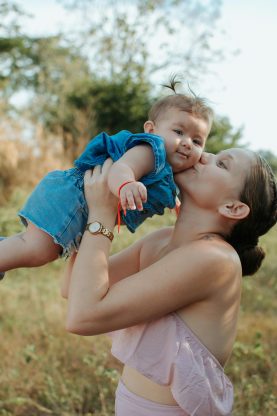Table of Contents
Supervision
One of the most important safety procedures for babysitters to follow is proper supervision of the children in their care. It is essential to keep a close eye on the children at all times, especially if they are young or have special needs. Make sure to stay within sight and sound of the children, and never leave them unattended, even for a short period of time. It is also important to set boundaries and establish rules for behavior to ensure that the children are safe and well-behaved.
On-Demand Childcare in Your Neighborhood
Book a Sitter
Emergency Preparedness
Another key safety procedure for babysitters is being prepared for emergencies. Make sure to familiarize yourself with the layout of the house, including where emergency exits are located and where first aid supplies are kept. Have a list of emergency contacts readily available, including the parents’ contact information, as well as numbers for poison control, the fire department, and emergency services. In the event of an emergency, stay calm and follow the procedures outlined by the parents.
Childproofing
Childproofing the home is an important safety measure that all babysitters should take. Before the parents leave, take a few moments to inspect the home for any potential hazards, such as sharp objects, toxic substances, or tripping hazards. Make sure that cabinets containing cleaning supplies or medications are locked, and that electrical outlets are covered. Keep small objects out of reach of young children to prevent choking hazards. By childproofing the home, you can create a safe environment for the children in your care.

First Aid
Knowing basic first aid procedures is essential for babysitters in case of accidents or injuries. Make sure to familiarize yourself with common first aid techniques, such as CPR, choking rescue, and wound care. Keep a first aid kit on hand and know how to use the supplies inside. If a child is injured, remain calm and assess the situation before taking action.
If the injury is serious or requires medical attention, contact the parents and emergency services immediately.
Communication with Parents
Effective communication with the parents is key to ensuring the safety of the children in your care. Before the parents leave, make sure to discuss any special instructions or concerns they may have regarding their children. Provide updates throughout the evening, such as meal times, bedtime routines, and any issues that may arise. In the event of an emergency, make sure to contact the parents immediately and follow their instructions. By maintaining open communication with the parents, you can ensure that the children receive the best care possible.
In conclusion, babysitting requires a great deal of responsibility, especially when it comes to the safety of the children in your care. By following these top five safety procedures – supervision, emergency preparedness, childproofing, first aid, and communication with parents – you can provide a safe and secure environment for the children you babysit. Remember that safety should always be your top priority, and by being prepared and vigilant, you can ensure that the children have a positive and safe experience under your care.











